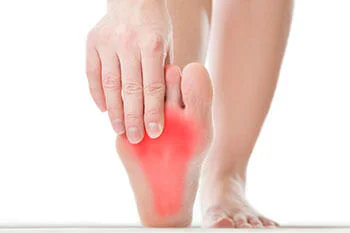Table of Contents
What is a tarsal coalition?
This is an abnormal bridging of bone, cartilage, or connective tissue that occurs in the tarsal bones of the foot. The tarsals make up the rear portion of the foot and include the talus, calcaneus, navicular, cuboid, and three cuneiforms. The more common types of coalitions occur between the talus and calcaneus (talocalcaneal) and calcaneus and navicular (calcaneonavicular).
Feet with coalitions are generally stiffer than normal due to the restriction of motion at the affected joint. Some feet will have a normal arch height while others will be in a fixed pronated alignment.
What is the cause of tarsal coalitions?
Tarsal coalitions are usually congenital conditions that, in most instances do not become painful until the teenage years. Coalitions can also develop from joint injuries or arthritic conditions.
How are they diagnosed?
Tarsal coalitions are suspected when a patient presents with a foot that is more rigid than normal and painful over the affected joint. X-rays of the foot will often confirm the diagnosis or create further suspicion if the shapes of the bones are not normal. The extent of the coalition can be determined using advanced diagnostic imaging such as CT or MRI scans.
How are coalitions treated?
Non-surgical treatments are focused on limiting movement to reduce stress of the rearfoot. This is accomplished with the use of stiffer motion controlling shoes and custom functional orthotics. In some cases of severe pain, cast immobilization, braces are considered.
Surgery is a consideration when there is continued pain after conservative care. In many cases the coalition is simply removed. In children with coalitions, the foot can at times adapt very well to removal of the coalition. In other cases a more involved procedure is necessary and this depends upon the location, type of tissue involved, and percentage of the normal joint anatomy that is damaged by the bridged tissue.
What to Do Next?
Contact us to make an appointment if you believe that you or your child may have a tarsal coalition.


